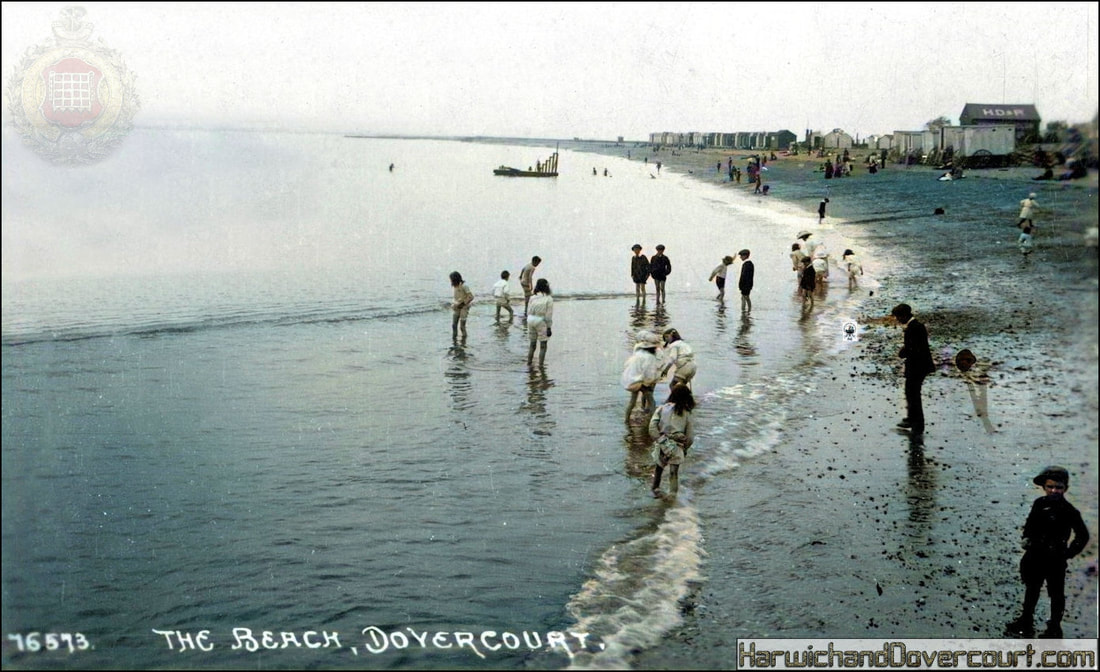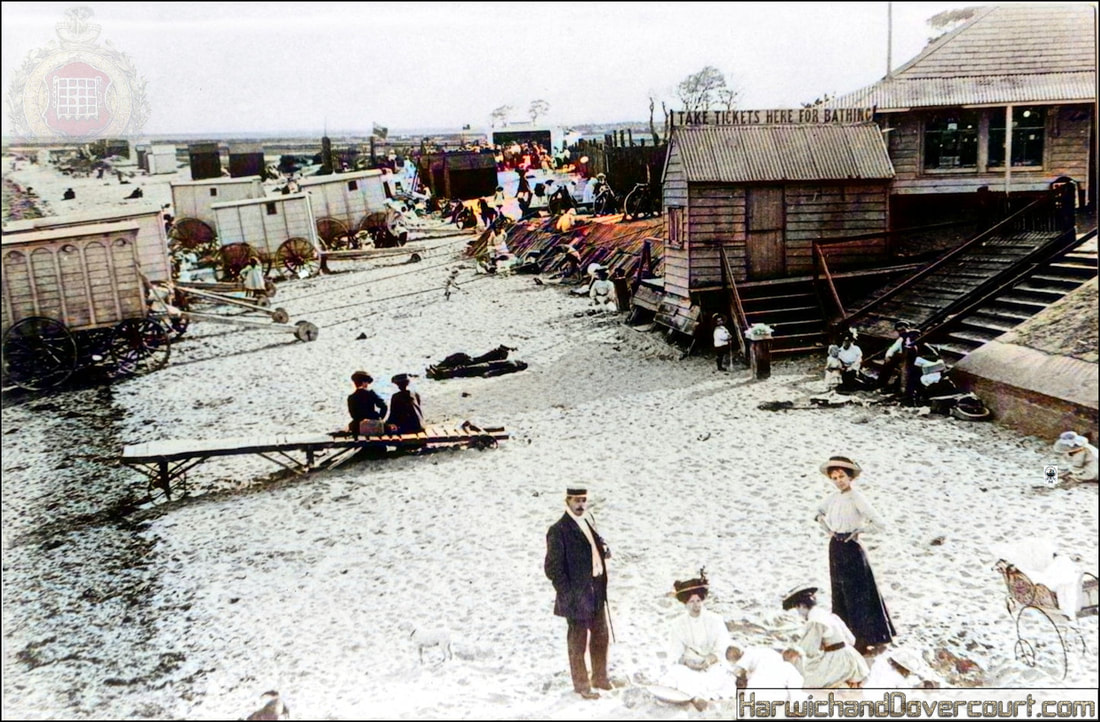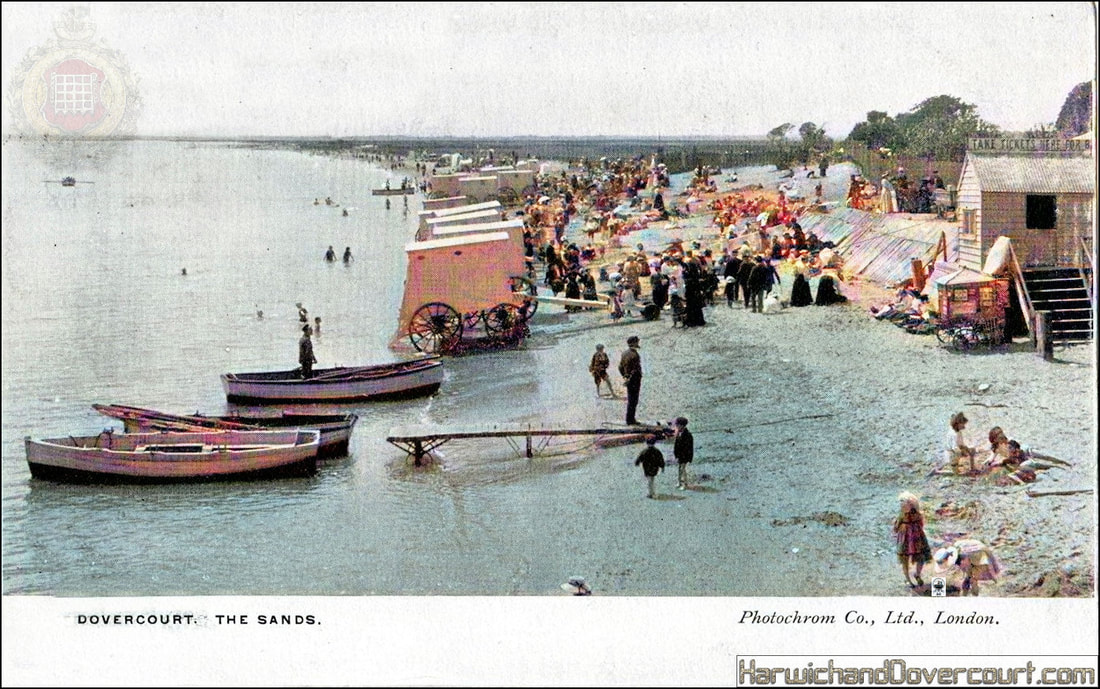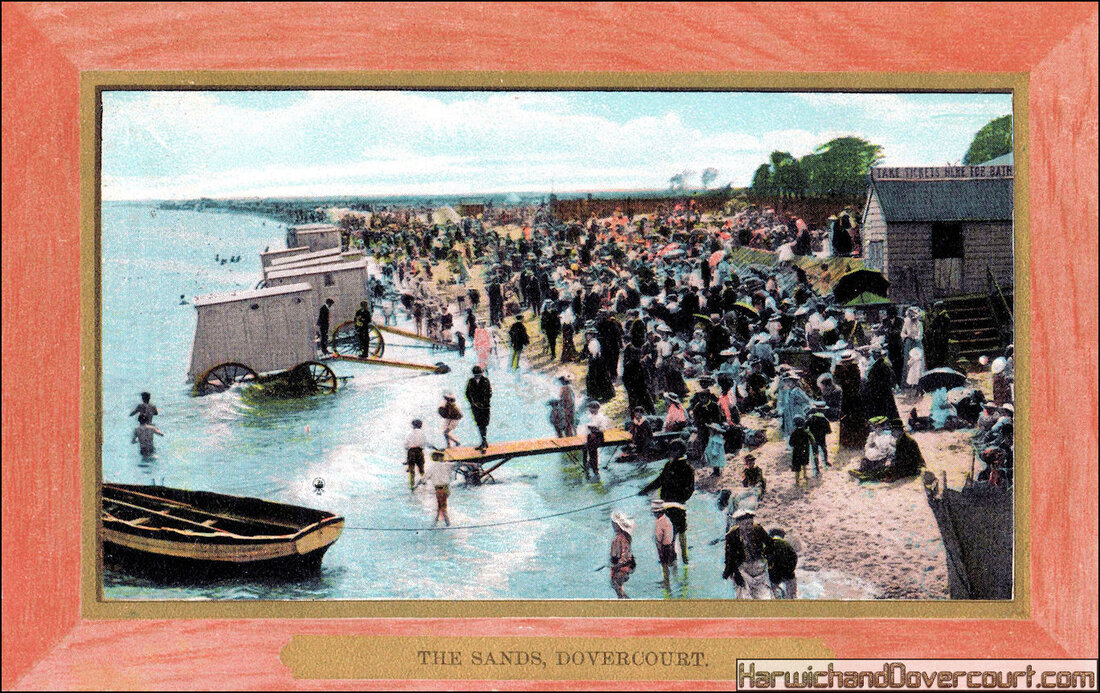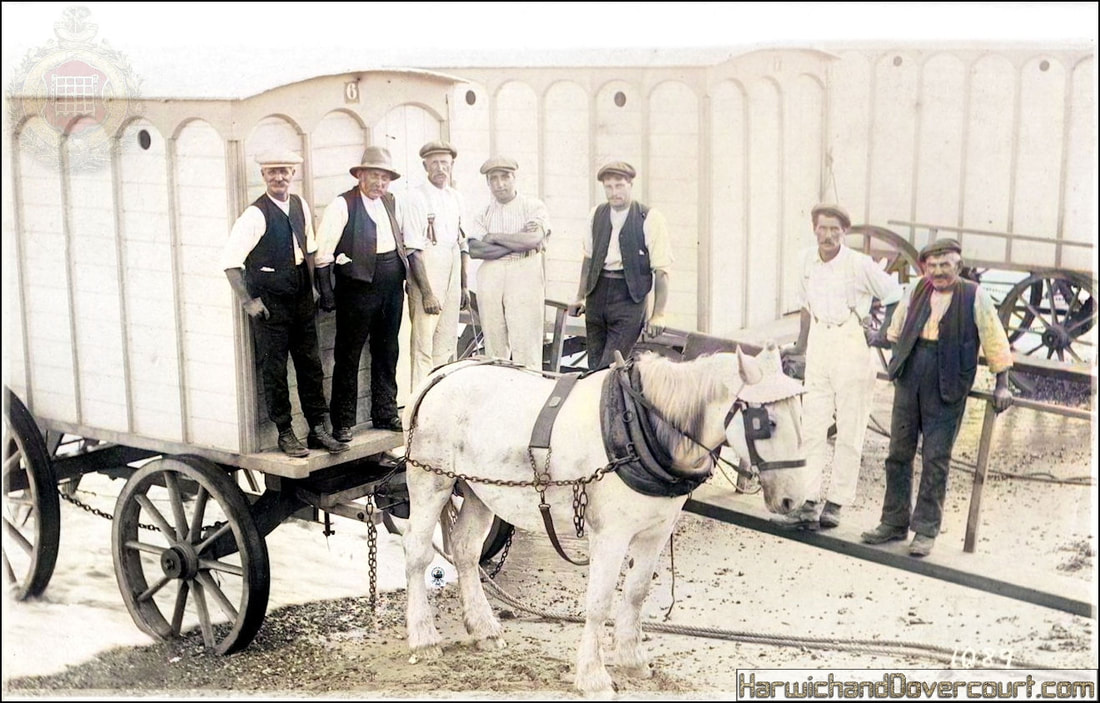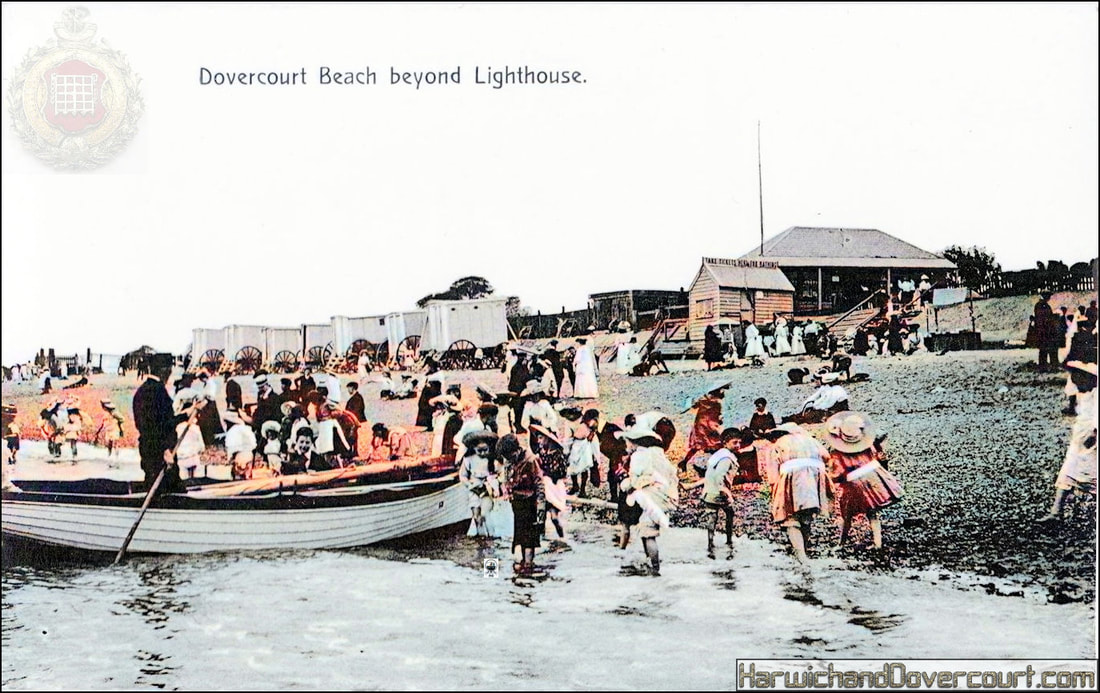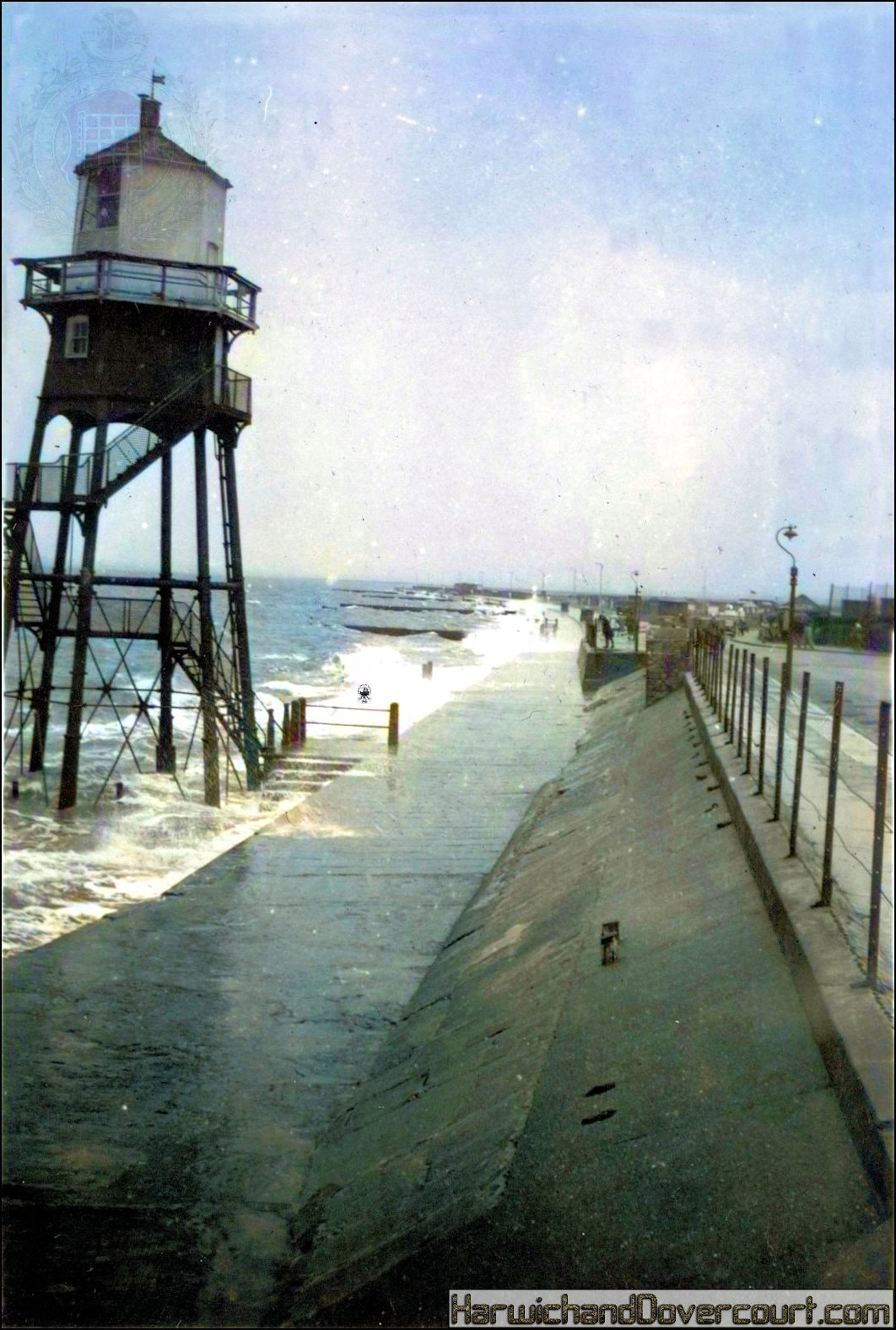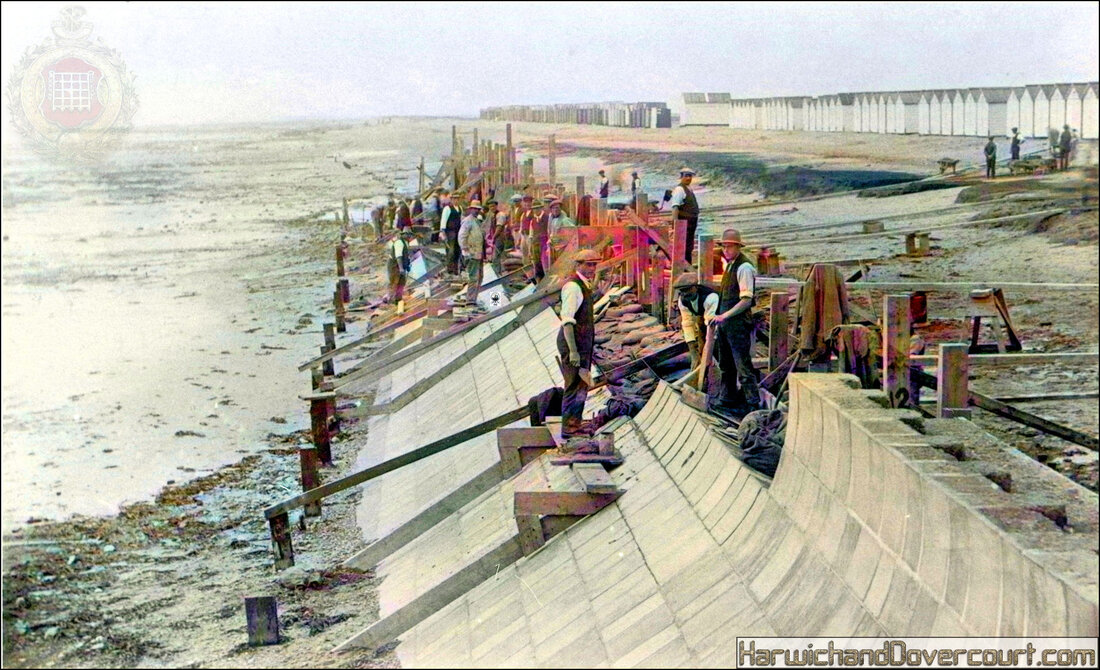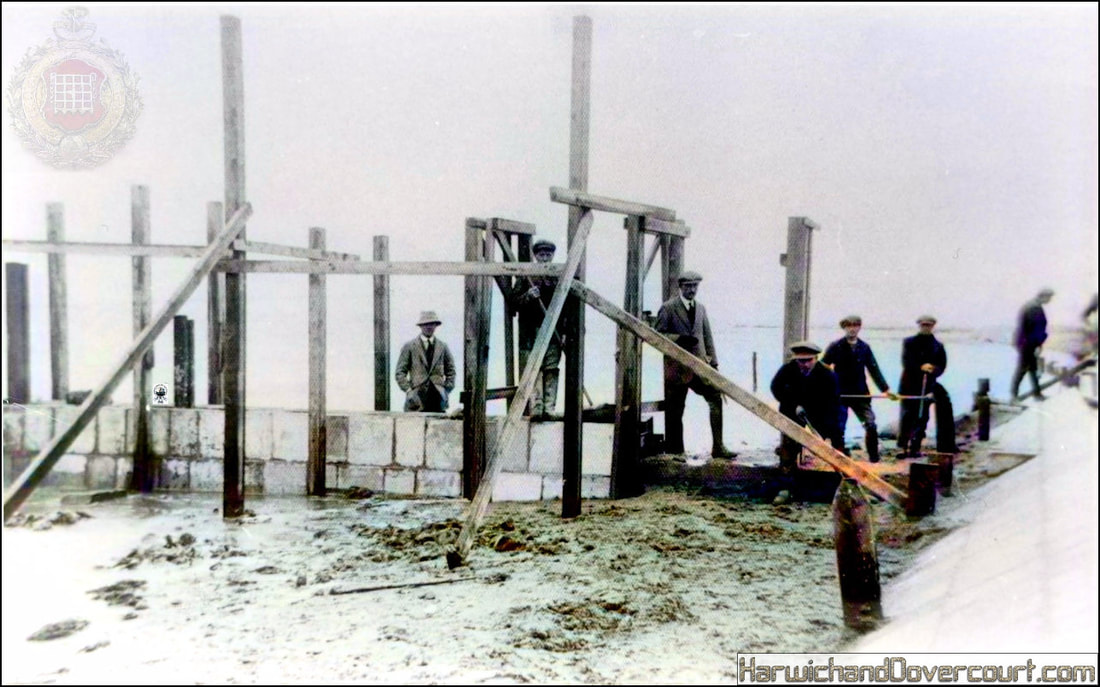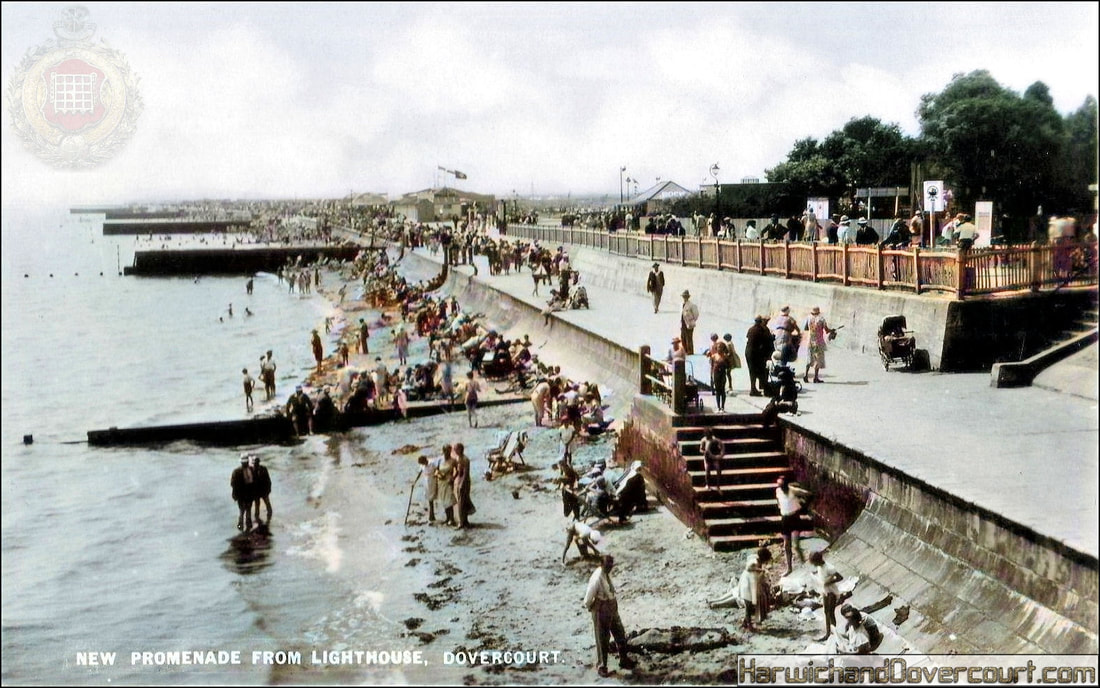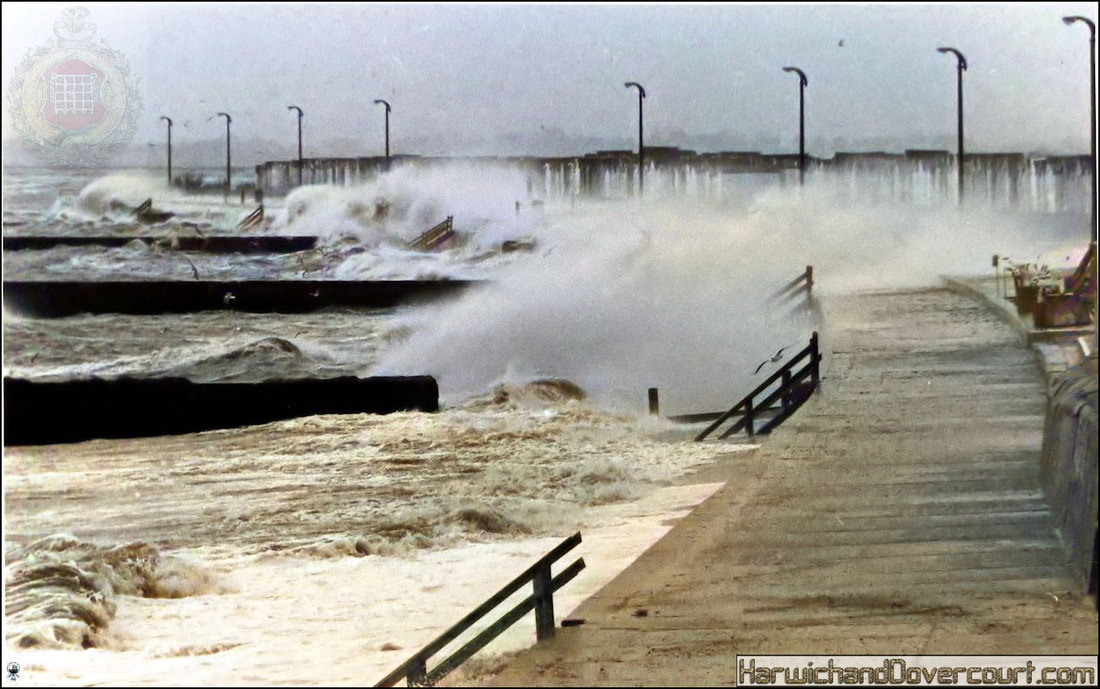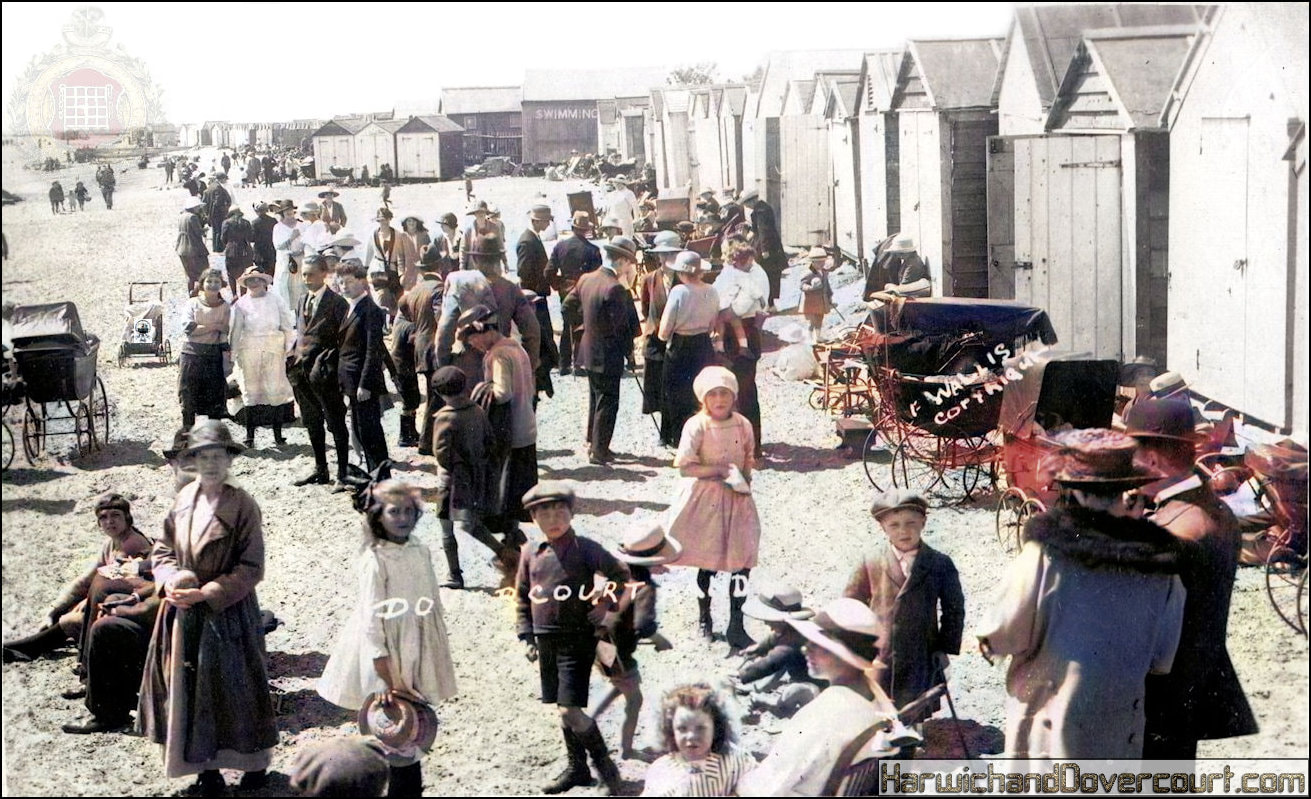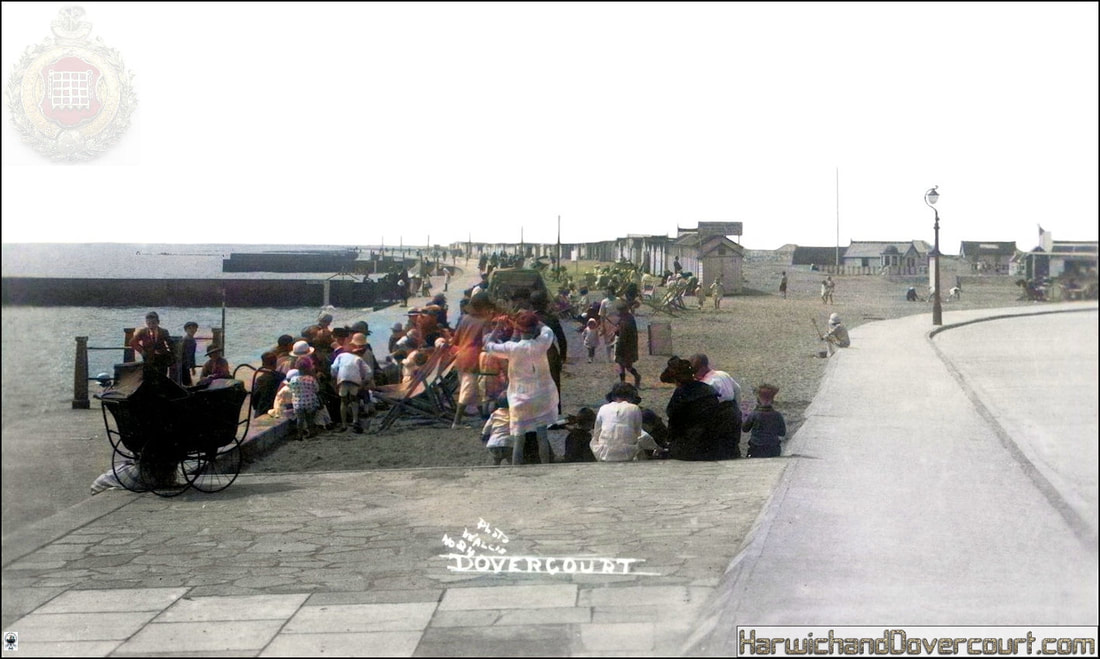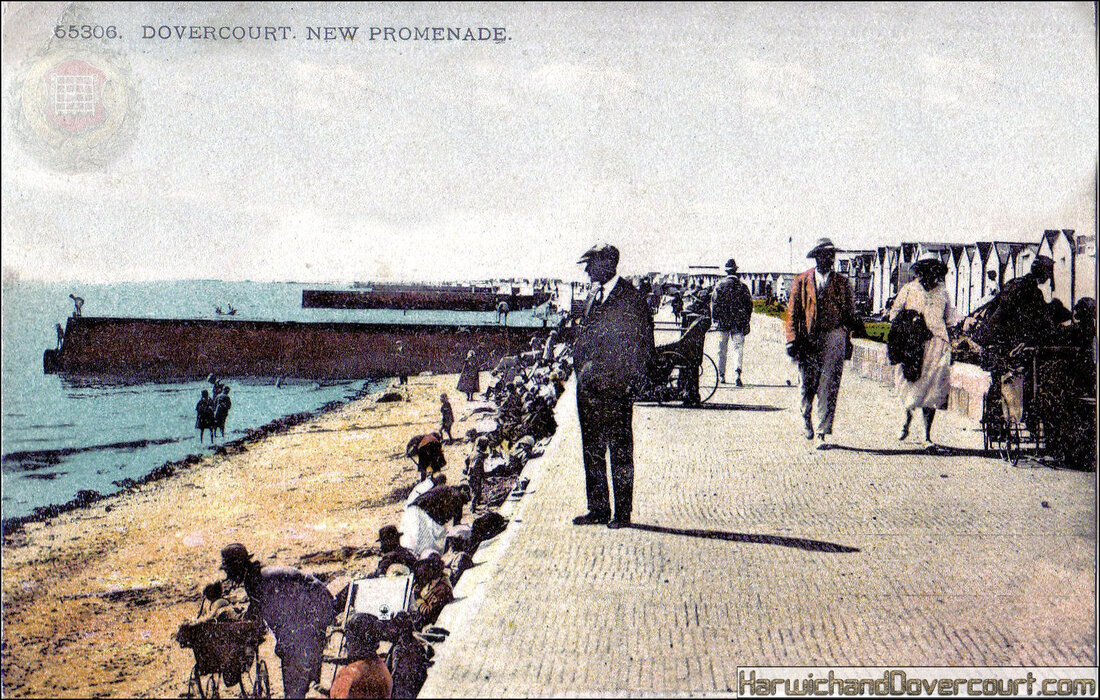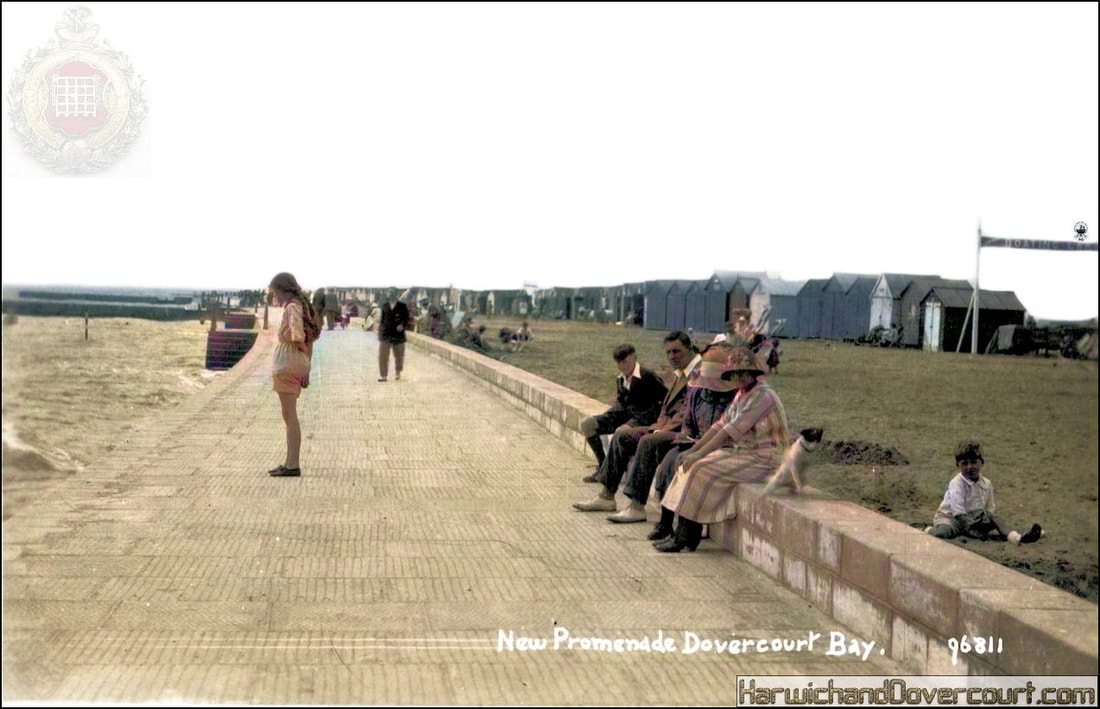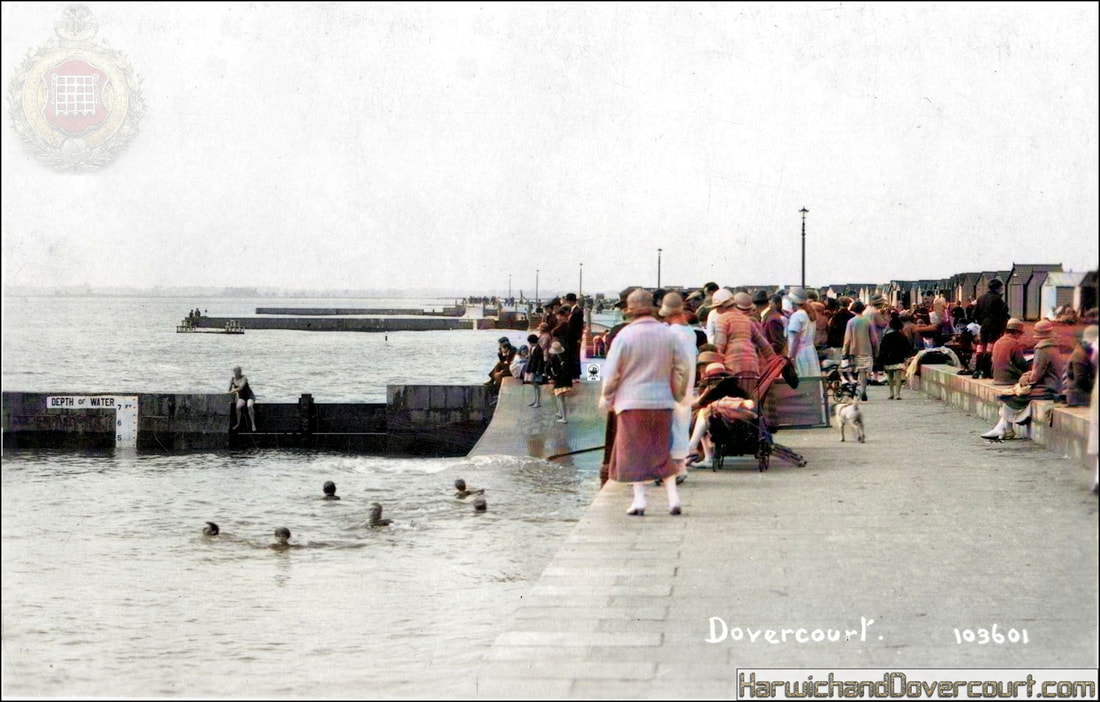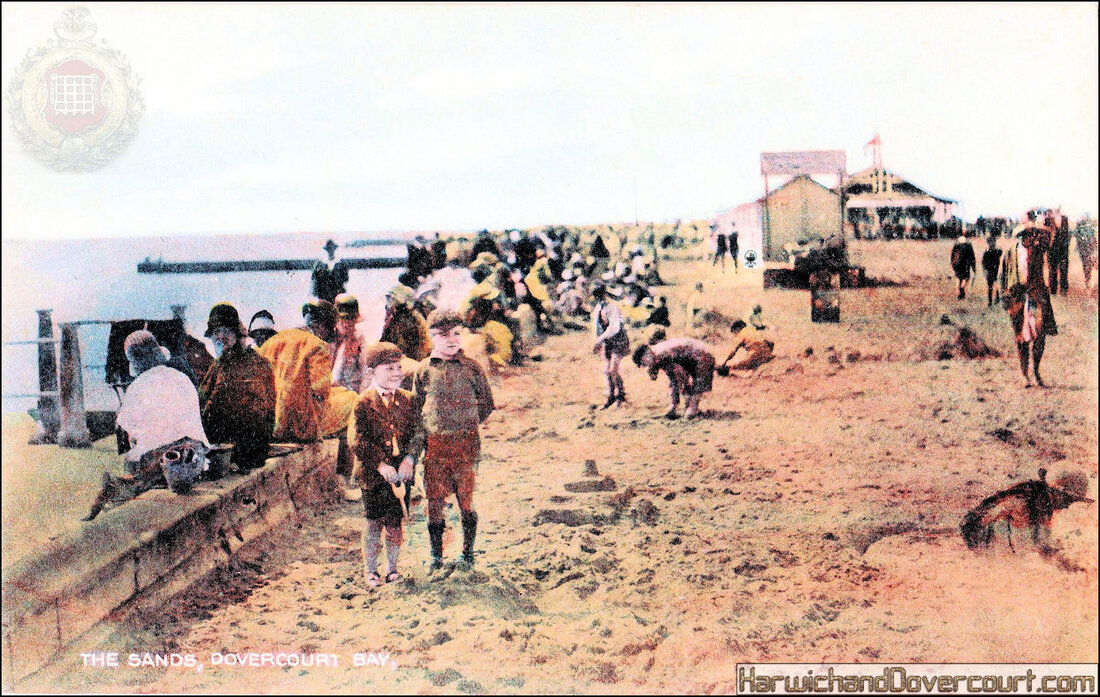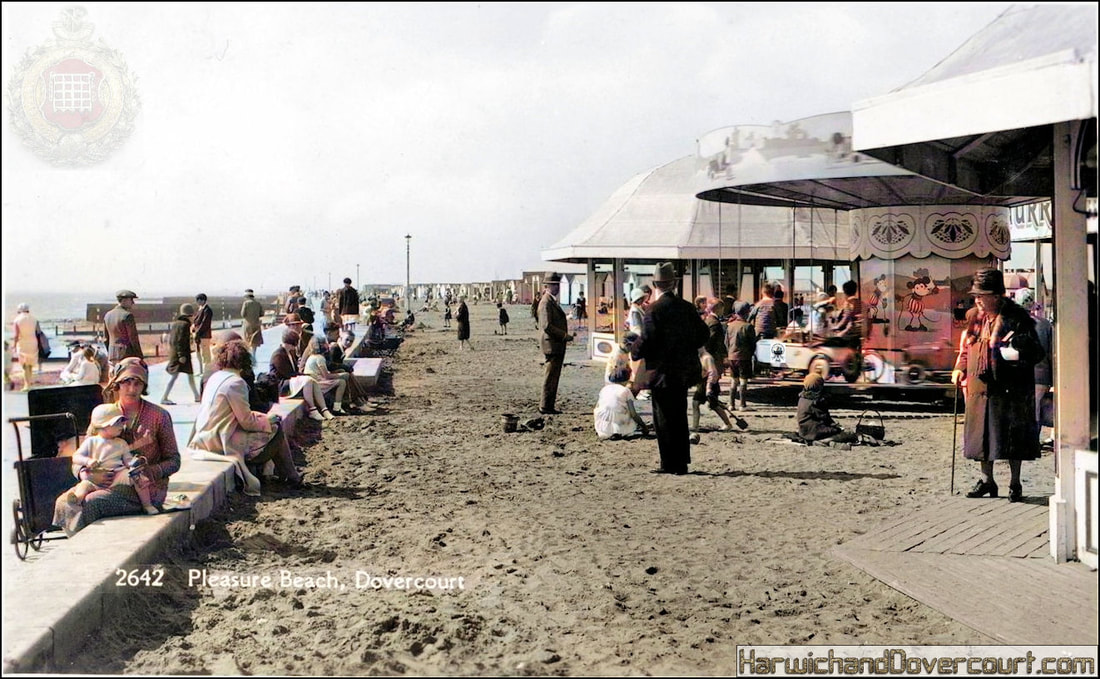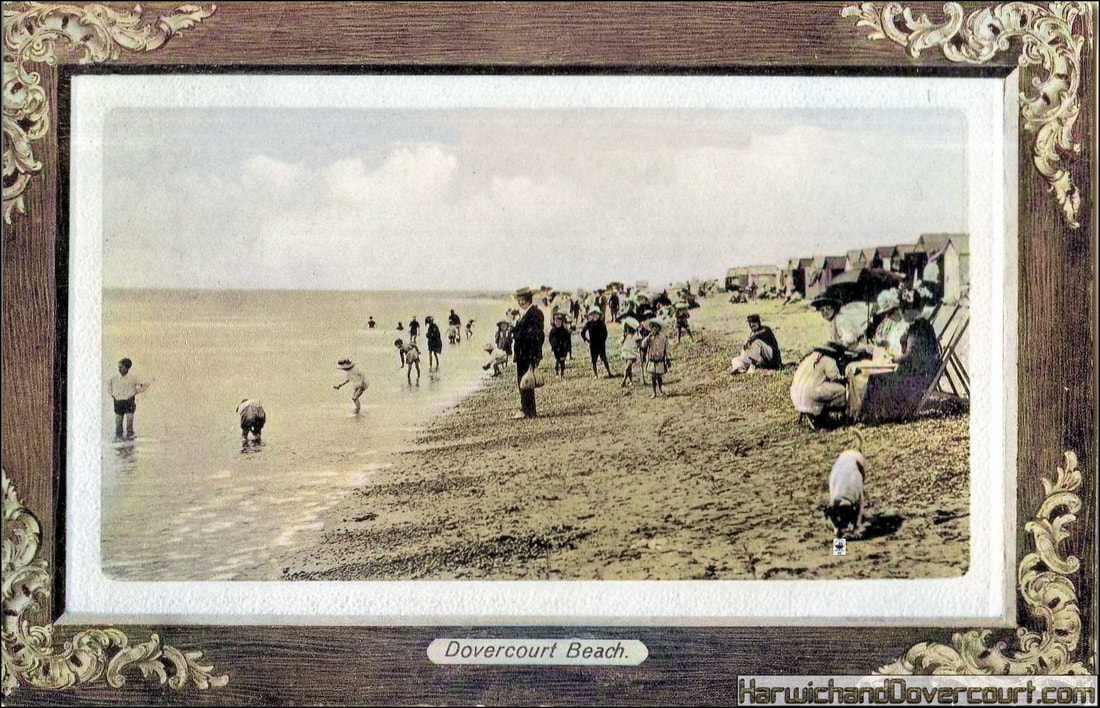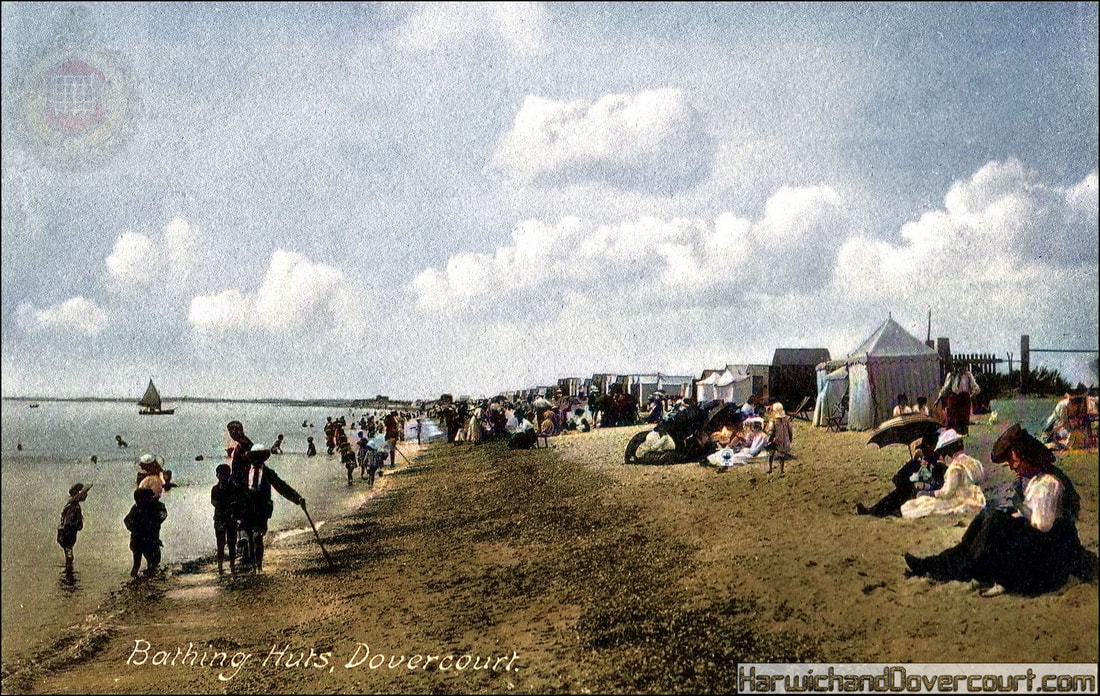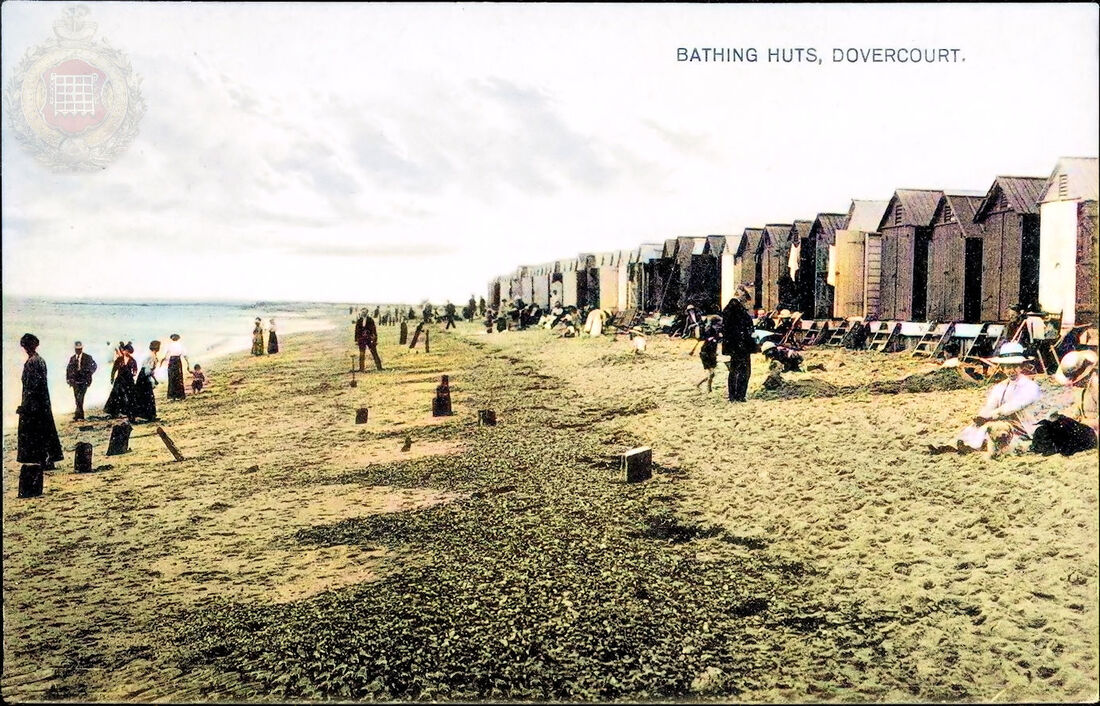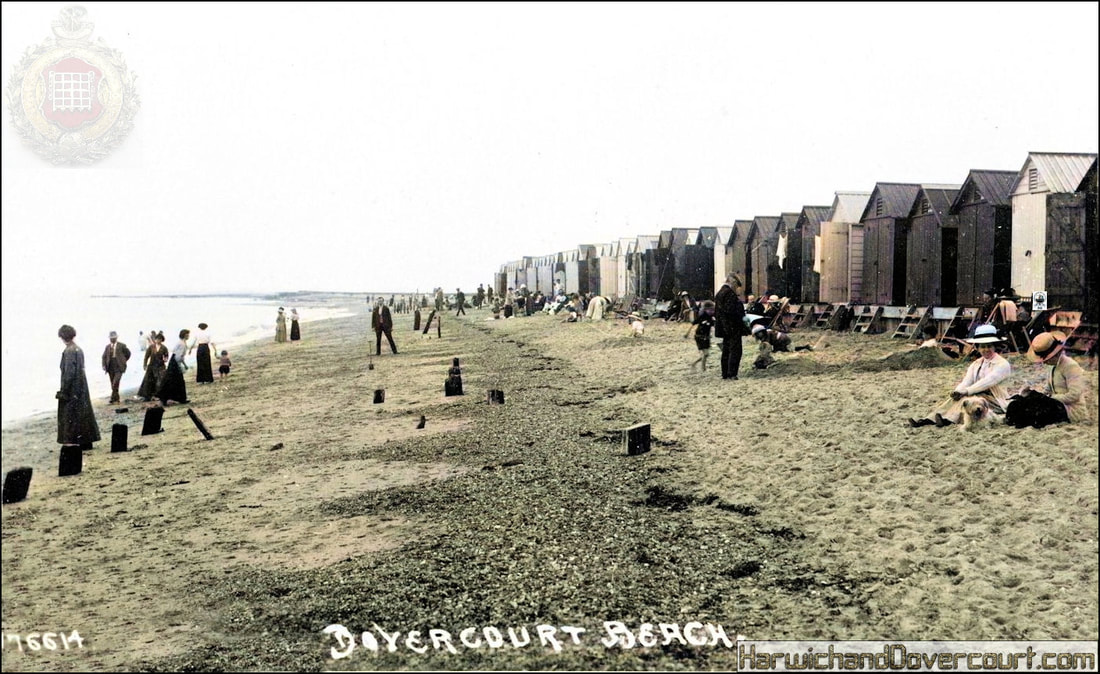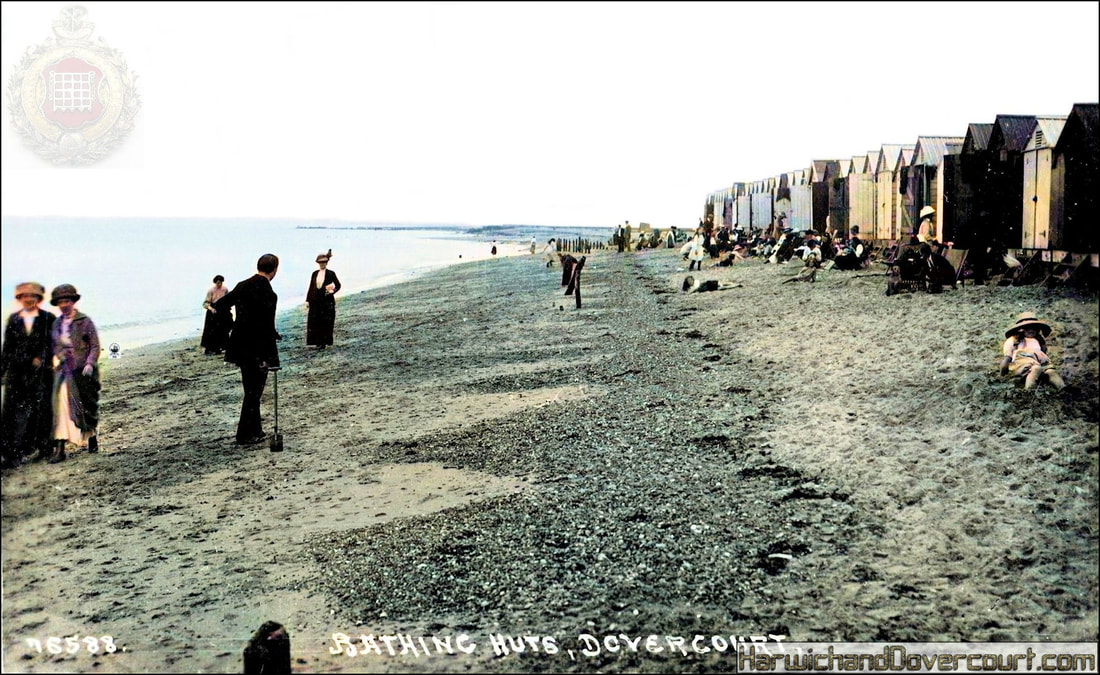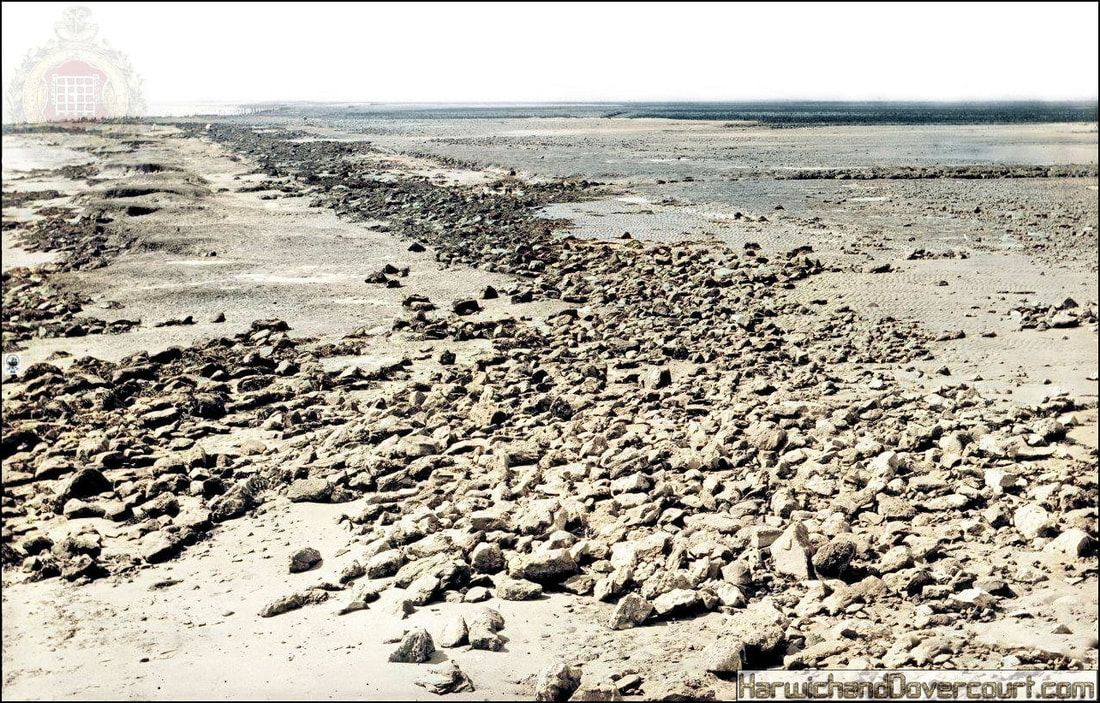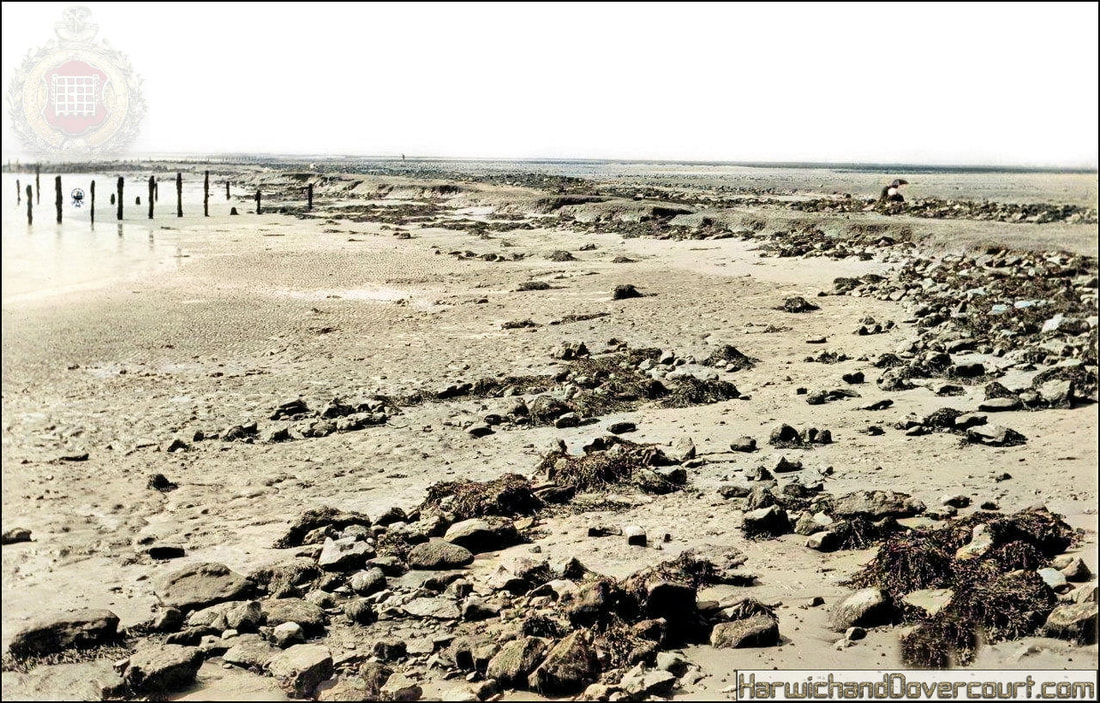The final stretch towards the "West End" (Promenade Extension)
~ #76573 The Beach, Dovercourt Bay, Essex (1913) Bells H&D ~
~ 01 The Beach, Dovercourt Bay (1899) H&D FC ~
~ 02 ~ "Bathing Machines", Dovercourt Beach 1904 ~
The start of the transition from "Bathing Machines" owned by the Phoenix Hotel over to "Bathing Huts", can be seen here, with both being present.
Most of the "Bathing machines" had disappeared in England by 1914, with Dovercourt being one of the last places continuing to use them.
Most of the "Bathing machines" had disappeared in England by 1914, with Dovercourt being one of the last places continuing to use them.
03 Dovercourt The Sands (Photocrom Co) (1906) H&D FW
04 3975.77 The Beach, Dovercourt (1905) FW
05 The Sands, Dovercourt, Hartmann (1905) FW
06 Transporting the Bathing Huts, Dovercourt (1908) H&D FC
Horse drawn "Bathing Machines" on the beach close to the Pheonix Hotel, at Dovercourt, Essex (1908)
For anyone yearning the return of some warm weather you can only dream of that moment when you finally get to the beach after a long winter, excitedly peel off your clothes, run madly towards the water and crash into the salty waves without a care in the world … this is not that. If you were a beach goer in Georgian or Victorian times, more specifically, a female beach goer, your day at the seaside would have likely had all the fun sucked out of it by a little invention known as the bathing machine.
At its peak of popularity, the purpose of the bathing machine was all about those crazy rules of bathing etiquette that they upheld in the 18th and 19th century, which kept women and their beach bodies out of sight (while the men frolicked freely on the beach, of course). The wooden carts with two doors on either side allowed bathers to change out of their clothes and into their bathing suits without having to be seen by the opposite sex walking across the beach in ‘improper clothing’, which in those days, on the gender-segregated beaches of Europe, would have been the modern-day equivalent of the walk of shame. The four-wheeled box would be rolled out to sea, usually by horse or sometimes human power and hauled back in when the beach goer signalled to the driver by raising a small flag attached to the roof. Some machines were equipped with a canvas tent lowered from the seaside door, capable of being lowered to the water, giving the bather greater privacy.
Once deep enough in the surf, our bather would then exit the cart using the door facing away from prying eyes on the beach and proceed to paddle. For inexperienced swimmers (which would have been most Victorian women in their billowing swimwear), some beach resorts offered the service of a “dipper”, a strong person of the same sex who would escort the bather out to sea in the cart and essentially push them into the water and yank them out when they were done. As long you as you did not drown, for the average Victorian, this sobering experience could be considered a successful day at the beach.
Bathing machines began popping up around the 1750's when swimwear had not yet been invented and most people still swam naked. But even when early forms of swimwear did start being introduced, society conveniently decided that a ‘proper woman’ should not be seen on the beach in her bathing suit. Totally logical.
At their most popular, bathing machines lined the beaches of Britain and parts of the British Empire, as well as France, Germany, the United States and Mexico.
When legal segregation of bathing areas in Britain ended in 1901 and it finally became acceptable for both genders to bathe together, it was the beginning of the end for the bathing machine. By the 1920's, they were almost entirely extinct, only finding use catering to an elderly clientele.
An excerpt from The Traveller’s Miscellany and Magazine of Entertainment, written in 1847 recalls the details of a luxury bathing machine…
The interior is all done in snow-white enamel paint, and one-half of the floor is pierced with many holes, to allow of free drainage form wet flannels. The other half of the little room is covered with a green Japanese rug. In one corner is a big-mouthed green silk bag lined with rubber. Into this the wet bathing-togs are tossed out of the way. There are large bevel-edged mirrors let into either side of the room, and below one juts out a toilet shelf, on which is every appliance. There are pegs for towels and the bathrobe and fixed in one corner is a little square seat that when turned up reveals a locker where clean towels, soap, perfumery, etc. are stowed. Ruffles of white muslin trimmed with lace and narrow green ribbons decorate every available space.
In an era of Brazilian bikinis and topless beaches, you would not think to find any trace of the bygone bathing machines but think twice the next time you go to the seaside and use the services of changing cabin. Some of the bathing machines have indeed survived to this day as beach huts. Those adorably photogenic and colourful little beach houses? They are direct successors of the Georgian bathing machine! When they were no longer needed for being carted out to sea, many were simply stripped of their wheels and plonked permanently back on the beach– a little-known reminder of eccentric seaside history.
Perhaps worth bringing back today as playful seafaring picnic huts, as we all wait for the slow reappearance of the foreign holiday.
For anyone yearning the return of some warm weather you can only dream of that moment when you finally get to the beach after a long winter, excitedly peel off your clothes, run madly towards the water and crash into the salty waves without a care in the world … this is not that. If you were a beach goer in Georgian or Victorian times, more specifically, a female beach goer, your day at the seaside would have likely had all the fun sucked out of it by a little invention known as the bathing machine.
At its peak of popularity, the purpose of the bathing machine was all about those crazy rules of bathing etiquette that they upheld in the 18th and 19th century, which kept women and their beach bodies out of sight (while the men frolicked freely on the beach, of course). The wooden carts with two doors on either side allowed bathers to change out of their clothes and into their bathing suits without having to be seen by the opposite sex walking across the beach in ‘improper clothing’, which in those days, on the gender-segregated beaches of Europe, would have been the modern-day equivalent of the walk of shame. The four-wheeled box would be rolled out to sea, usually by horse or sometimes human power and hauled back in when the beach goer signalled to the driver by raising a small flag attached to the roof. Some machines were equipped with a canvas tent lowered from the seaside door, capable of being lowered to the water, giving the bather greater privacy.
Once deep enough in the surf, our bather would then exit the cart using the door facing away from prying eyes on the beach and proceed to paddle. For inexperienced swimmers (which would have been most Victorian women in their billowing swimwear), some beach resorts offered the service of a “dipper”, a strong person of the same sex who would escort the bather out to sea in the cart and essentially push them into the water and yank them out when they were done. As long you as you did not drown, for the average Victorian, this sobering experience could be considered a successful day at the beach.
Bathing machines began popping up around the 1750's when swimwear had not yet been invented and most people still swam naked. But even when early forms of swimwear did start being introduced, society conveniently decided that a ‘proper woman’ should not be seen on the beach in her bathing suit. Totally logical.
At their most popular, bathing machines lined the beaches of Britain and parts of the British Empire, as well as France, Germany, the United States and Mexico.
When legal segregation of bathing areas in Britain ended in 1901 and it finally became acceptable for both genders to bathe together, it was the beginning of the end for the bathing machine. By the 1920's, they were almost entirely extinct, only finding use catering to an elderly clientele.
An excerpt from The Traveller’s Miscellany and Magazine of Entertainment, written in 1847 recalls the details of a luxury bathing machine…
The interior is all done in snow-white enamel paint, and one-half of the floor is pierced with many holes, to allow of free drainage form wet flannels. The other half of the little room is covered with a green Japanese rug. In one corner is a big-mouthed green silk bag lined with rubber. Into this the wet bathing-togs are tossed out of the way. There are large bevel-edged mirrors let into either side of the room, and below one juts out a toilet shelf, on which is every appliance. There are pegs for towels and the bathrobe and fixed in one corner is a little square seat that when turned up reveals a locker where clean towels, soap, perfumery, etc. are stowed. Ruffles of white muslin trimmed with lace and narrow green ribbons decorate every available space.
In an era of Brazilian bikinis and topless beaches, you would not think to find any trace of the bygone bathing machines but think twice the next time you go to the seaside and use the services of changing cabin. Some of the bathing machines have indeed survived to this day as beach huts. Those adorably photogenic and colourful little beach houses? They are direct successors of the Georgian bathing machine! When they were no longer needed for being carted out to sea, many were simply stripped of their wheels and plonked permanently back on the beach– a little-known reminder of eccentric seaside history.
Perhaps worth bringing back today as playful seafaring picnic huts, as we all wait for the slow reappearance of the foreign holiday.
07 7-741 Dovercourt Beach beyond Lighthouse (1911) S.&.S.C. CIII FW
08 Inner Lighthouse H&D (1946) FC
09 46. Construction of West End Prom (1923) FW
Public works grants for the construction of new sea defences in Dovercourt (1923-4)
After the post-war boom of 1919-20 ended, UK unemployment rose sharply to over 10% and stayed high. The problem was particularly depressing for the many servicemen who returned from the Western front to find a lack of jobs on their return.This was a period of depression, deflation and a steady decline in the UK’s former economic pre-eminence.
For a decade of deflation and stagnant growth, Government grants were offered to try and stimulate growth, with Harwich Town Council taking full advantage of these for public works, including the construction of sea defences, boating lakes, putting greens, tennis courts, swimming pool and even a new road (opened in April 1925).
After the post-war boom of 1919-20 ended, UK unemployment rose sharply to over 10% and stayed high. The problem was particularly depressing for the many servicemen who returned from the Western front to find a lack of jobs on their return.This was a period of depression, deflation and a steady decline in the UK’s former economic pre-eminence.
For a decade of deflation and stagnant growth, Government grants were offered to try and stimulate growth, with Harwich Town Council taking full advantage of these for public works, including the construction of sea defences, boating lakes, putting greens, tennis courts, swimming pool and even a new road (opened in April 1925).
10 45. Building West End Prom - Groyne (1923) H&D FW
11 New Promenade from Lighthouse, Dovercourt (1932) H&D FW
12 Rough Seas at Dovercourt Looking West (1974) H&D FW
13 Dovercourt Sands (1920) Wallis FW
A classic "Wallis" card, with lots of children, happy to be in the photograph.
The new promenade and swimming pool, were yet to be completed.
The heavy clothing is in stark contrast, to today's generation and pushing or pulling those prams, in the sand was no easy feat.
The new promenade and swimming pool, were yet to be completed.
The heavy clothing is in stark contrast, to today's generation and pushing or pulling those prams, in the sand was no easy feat.
14 Dovercourt No 24 Wallis (1922) H&D FW
15 55306 Dovercourt New Promenade (1925) H&D CF
16 96811 New Promenade, Dovercourt Bay (1924) Bell's FW
17 103601 Dovercourt (1925) Bells H&D CIII FWX
18 The Sands, Dovercourt Bay. (1930) H&D FW
19 2642 Pleasure Beach, Dovercourt (1930) Nene Series, H. Coates, Wisbech H&D FW
Close to the beach opposite the skating rink, once stood a small pleasure fairground, with "roundabouts" and "dodgems" etc., it extended down towards the boating lakes. On one of the rides is an early Mickey Mouse illustration taken from Walt Disney’s “Wild Waves” produced in 1929, note the much thinner mouse than later illustrations.
These photographic cards were produced by Herbert George Coates (b:1883 d:1978) of Market Place, Wisbech who produced many high quality local cards mainly between 1930 and 1945.
These photographic cards were produced by Herbert George Coates (b:1883 d:1978) of Market Place, Wisbech who produced many high quality local cards mainly between 1930 and 1945.
20 Dovercourt Beach (1905) Pictorial H&D FW
21 Bathing Huts, Dovercourt (1908) H&D FW
22 Bathing Huts, Dovercourt (1913) H&D FW
~ #76614 Dovercourt Bay Beach, Essex (1913) Bells H&D ~
23 76588 Bathing Huts, Dovercourt (1913) Bell's FW
24 Earlams (Irlam's) Beach, West End, Dovercourt Bay (1900) H&D FW
25 The quiet solitude of Earlams (Irlam's) Beach, West End, Dovercourt Bay (1900) H&D FW
"Slow Moments In Time"
Take time to do nothing, but gaze at the shore.
Watching the white surfs, rolling & roar.
Feel the breeze tickle & tease as it ruffles then leaves
Then the warmth of the fire, as it flickers & dies.
Take time to do nothing, but look to the sky.
At children at play, while old folk they sigh.
make time to reflect , don't worry you're late.
Slow moments in time, is so worth your wait.
Take time to do nothing, but gaze at the shore.
Watching the white surfs, rolling & roar.
Feel the breeze tickle & tease as it ruffles then leaves
Then the warmth of the fire, as it flickers & dies.
Take time to do nothing, but look to the sky.
At children at play, while old folk they sigh.
make time to reflect , don't worry you're late.
Slow moments in time, is so worth your wait.
